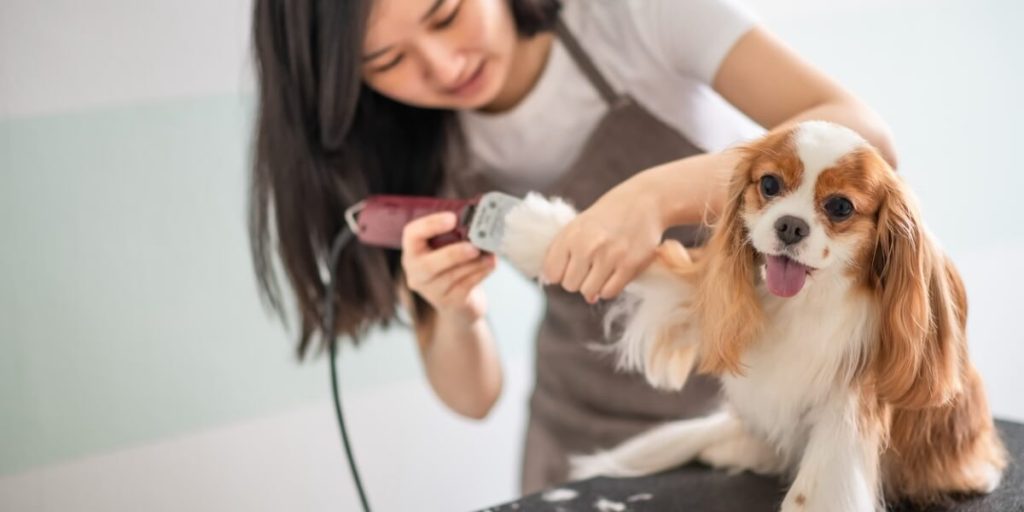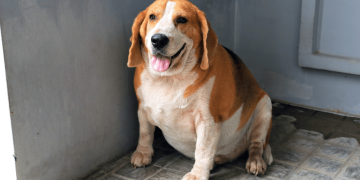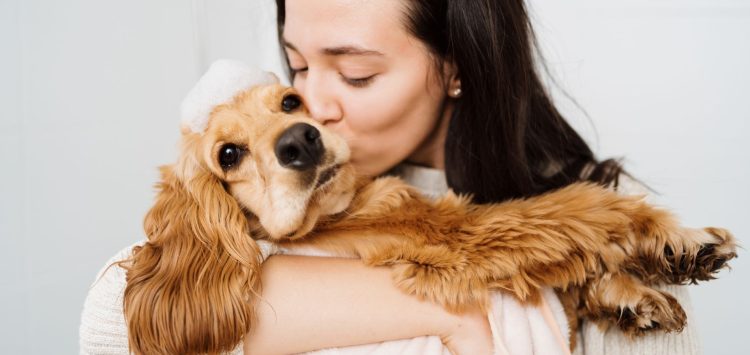Grooming your pet is an important part of maintaining their health and appearance. However, it’s essential to be mindful of your pet’s skin, as improper grooming practices or the use of harsh products can cause irritation, discomfort, and even long-term skin problems. Whether you’re brushing, bathing, trimming, or using grooming tools, taking extra care during each step can help ensure that your pet’s skin remains healthy and free from irritation. Here are some tips on how to avoid irritating your pet’s skin during grooming.
1. Choose the Right Products
Using the right grooming products is crucial for preventing skin irritation. Pet shampoos, conditioners, and grooming sprays are specifically formulated for pets’ skin and coat needs. Human products, on the other hand, often contain ingredients that are too harsh for animals.
- Use Gentle Shampoos: Always choose shampoos and conditioners that are formulated for pets. Look for those that are hypoallergenic, fragrance-free, and free from sulfates and parabens. These ingredients can dry out the skin or cause allergic reactions.
- Avoid Harsh Chemicals: Some grooming products contain chemicals that can irritate your pet’s skin, especially for pets with sensitive skin. Avoid products with alcohol, artificial dyes, or strong fragrances.
- Moisturizing Shampoos: If your pet has dry or flaky skin, use shampoos that contain moisturizing ingredients such as oatmeal, aloe vera, or coconut oil. These ingredients can help soothe and hydrate the skin during grooming.
2. Test Products Before Full Use
Before using any new product on your pet’s skin, conduct a patch test to ensure it won’t cause irritation. Apply a small amount of the product to a small area of their body, such as behind the ear or on the inner thigh, and monitor for any signs of redness, swelling, or itching over the next 24 hours.
- How to Patch Test: Apply a small amount of the shampoo or conditioner to your pet’s skin and wait for 24 hours to see if any adverse reactions occur. If you notice any redness or irritation, discontinue use and choose a different product.
3. Use the Right Tools for Brushing
Brushing is a regular part of pet grooming, but using the wrong tools can lead to discomfort or even skin damage. For pets with sensitive skin or those with long or curly fur, the type of brush you use matters a great deal.
- Choose the Right Brush: Select a brush that is designed for your pet’s coat type. For example, slicker brushes are ideal for long-haired pets, while bristle brushes work well for short-haired dogs. Avoid brushes with sharp, metal bristles that can scratch the skin.
- Avoid Over-Brushing: Over-brushing, especially with stiff or hard-bristled brushes, can lead to skin irritation and abrasion. Brush gently, and avoid applying too much pressure. Brushing should be a relaxing experience for your pet, not a painful one.
- Regularly Clean Brushes: Clean your grooming tools regularly to avoid transferring dirt, oils, or bacteria onto your pet’s skin. Dirty brushes can cause irritation or even infection if not kept clean.
4. Be Gentle During the Bath
Bathing your pet is one of the most common grooming activities, but it’s essential to do it in a way that avoids irritating their skin. Harsh bathing techniques or overly hot water can damage the skin and cause discomfort.
- Avoid Hot Water: Hot water can dry out and irritate your pet’s skin. Always use lukewarm water for bathing, as this will be gentler on their skin and provide a more comfortable experience.
- Rinse Thoroughly: Leaving shampoo or conditioner residue on your pet’s skin can cause irritation. Make sure to rinse all products thoroughly from your pet’s coat to avoid product build-up.
- Gentle Lathering: When applying shampoo, use your hands to lather gently, avoiding excessive scrubbing or rubbing, which could lead to skin irritation.
5. Avoid Over-Bathing
Bathing your pet too frequently can strip their skin of its natural oils, leading to dryness and irritation. Most pets do not need to be bathed more than once a month unless they get especially dirty or smelly.
- Bathing Frequency: For most pets, a bath every 4-6 weeks is sufficient. However, if your pet has sensitive or dry skin, it’s best to bathe them less frequently. Over-bathing can damage the skin’s protective barrier and lead to dryness, flakiness, or rashes.

6. Trim Hair Carefully
Trimming your pet’s hair is an important part of their grooming routine, especially for breeds with fast-growing coats. However, improper trimming can cause irritation, cuts, or discomfort.
- Use Proper Scissors or Clippers: Always use pet-specific scissors or clippers that are designed to be gentle on their skin. Using blunt or poorly maintained tools can pull on the fur, causing pain or cuts.
- Trim Slowly and Carefully: Avoid rushing through the grooming process, especially when trimming around sensitive areas such as the ears, paws, or face. Take your time and trim in small sections to avoid making any accidental cuts or nicks.
- Keep Tools Clean and Sharp: Dull scissors or clippers can tug at the hair and cause discomfort. Regularly sharpen your tools to ensure they are cutting smoothly and efficiently. Clean your grooming tools to prevent the buildup of dirt and bacteria.
7. Focus on Sensitive Areas
Certain areas of your pet’s body are more sensitive than others, and special care should be taken when grooming these spots.
- Around the Eyes: The skin around your pet’s eyes is delicate and should be handled with care. Avoid getting shampoo or grooming products near the eyes, and use a damp cloth to gently wipe away any dirt or discharge.
- Ears and Paws: The skin inside your pet’s ears and around their paws is very sensitive. When grooming these areas, avoid using harsh products and take extra care not to pull the fur too tightly.
- Belly and Groin Area: These areas are often more prone to skin irritation. When trimming or brushing the belly or groin, use gentle strokes and be cautious to avoid causing any discomfort.
8. Check for Skin Issues Before Grooming
Before starting the grooming process, take a moment to inspect your pet’s skin for any signs of existing issues, such as cuts, rashes, lumps, or inflammation. If you notice any abnormalities, it’s important to address these before proceeding with grooming.
- Check for Dry Patches or Redness: If your pet has any dry patches, redness, or irritation, refrain from bathing them with a harsh product. Instead, use a gentle, soothing shampoo specifically designed for sensitive skin. You may also want to consult with a veterinarian if you notice any concerning skin issues.
- Watch for Hot Spots or Sores: Pets with hot spots or skin infections should not be bathed until the skin has healed. Bathing an infected area can exacerbate the issue and lead to further discomfort. If you notice any sore spots, it’s best to consult your vet before proceeding.
9. Keep Your Pet Calm During Grooming
Stress can cause pets to move suddenly, which can lead to nicks, cuts, or irritations during the grooming process. Ensuring your pet is calm and comfortable during grooming is essential to prevent skin injury.
- Create a Relaxing Environment: Groom your pet in a calm and quiet space, free from distractions. Speak to them gently, and take breaks if needed to reduce stress.
- Use Positive Reinforcement: Reward your pet with treats or praise throughout the grooming process. This helps keep them calm and positive about future grooming sessions.
- Enlist Help if Needed: If your pet is particularly anxious or difficult to groom, consider enlisting the help of a professional groomer who is trained to handle pets with sensitive skin.
10. Post-Grooming Care
After grooming, always check your pet’s skin for any signs of irritation or discomfort. You can also apply soothing products to help calm the skin.
- Apply Skin Soothing Products: If your pet’s skin appears red or irritated after grooming, consider applying a calming balm or spray that contains natural ingredients such as aloe vera or oatmeal. These ingredients can help reduce inflammation and irritation.
- Monitor for Signs of Irritation: Keep an eye on your pet’s skin in the days following grooming. If you notice excessive scratching, redness, or swelling, it may indicate that they were irritated during grooming, and you should consult your vet if necessary.
Conclusion
Grooming is an important part of caring for your pet, but it must be done with caution to avoid irritating their skin. By choosing the right grooming products, using the correct tools, and being gentle during the process, you can help ensure that your pet’s grooming experience is comfortable and beneficial. Regular grooming not only keeps your pet clean and healthy but also helps to detect any potential skin issues early on, allowing you to address them before they become serious. Always take your time, and if you’re ever in doubt, don’t hesitate to consult a professional groomer or veterinarian for advice.























































